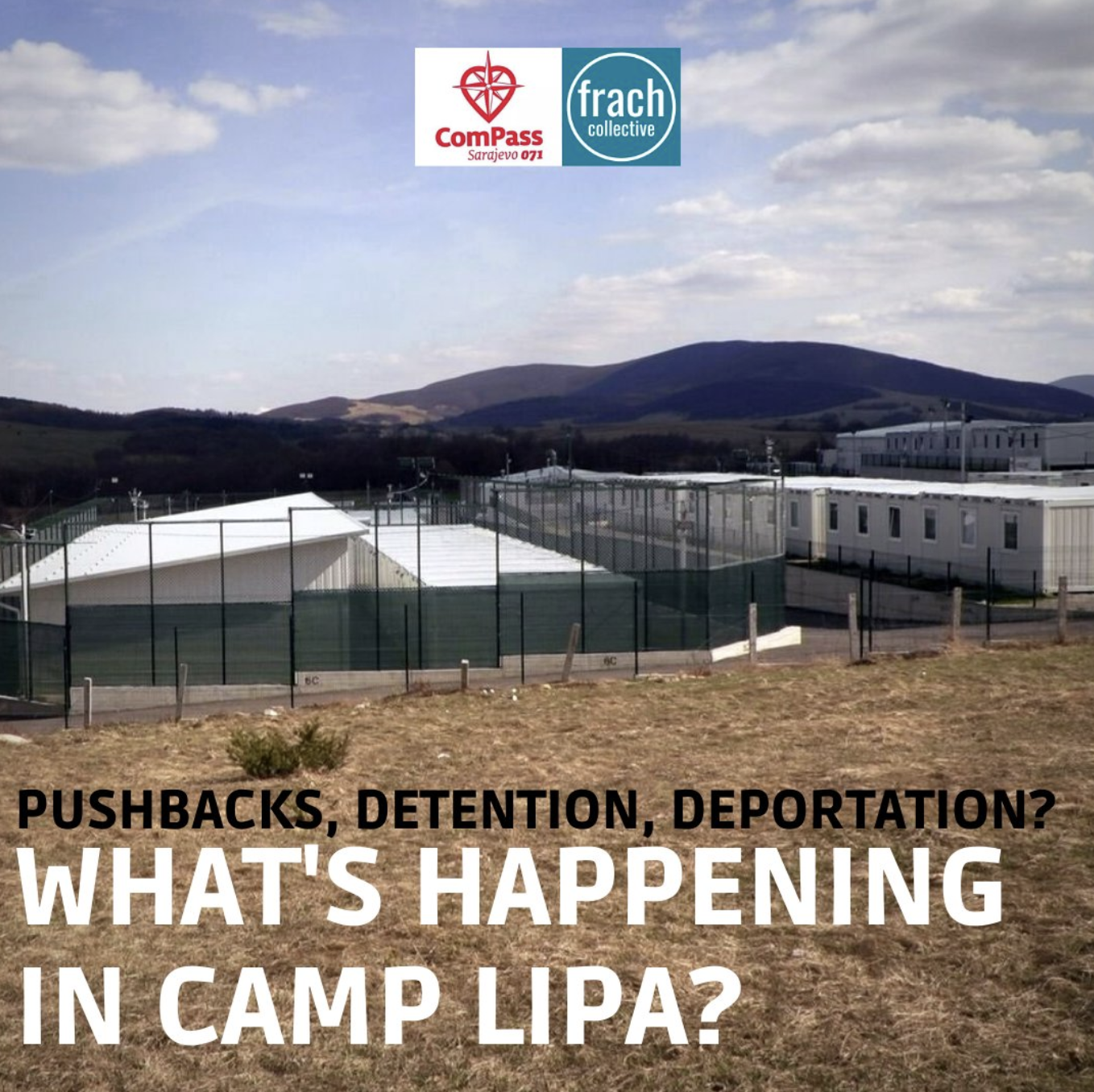
In 2022, the EU announced plans to fund a new detention unit within the grounds of a Temporary Reception Centre near Bosnia’s north-western border with Croatia. In recent months, however, significant confusion and controversy has emerged surrounding the centre.
In November 2022, the EU’s Neighbourhood and Enlargement Commissioner Oliver Varhelyi announced an EUR 500,000 agreement between the Bosnian government and IOM, financed by the EU, for the construction of a detention area within the Lipa Temporary Reception Centre. Speaking from Bosnia and Herzegovina (BiH), Varelyi made clear the intended purpose of the unit when he said: “We need to keep our detention facilities in Lipa and the region under control, meaning that the fake asylum-seekers must be detained until they return to their countries of origin.”
In January this year, observers in the region reported that several containers had been set up, separated from the rest of the Lipa facility by wire fence. In April, the Austria-based NGO SOS-Balkanroute also reported that it had spoken to migrants and asylum seekers who had been in Lipa and who had described the new unit. Comparing it to “an American high-security prison,” they described “a high fence, cameras at every step, windows with prison bars and almost no daylight in the cells.”
Non-Governmental Organisation Involvement
Significant uncertainty has surrounded the facility. The exact time period for which non-nationals would be held in the facility, for example, has remained unclear. Initially,Varelyi said that “fake asylum seekers” would be detained in the facility until they are returned to their country of origin. But in April this year, the EU Special Representative to BiH Johann Sattler stated that people could only be detained there for 72 hours, for the purposes of conducting additional security checks.
The construction of the unit has also been shrouded in confusion and controversy. Although numerous reports alleged that the International Centre for Migration Policy Development (ICMPD)–a Vienna-based international organisation comprised of 20 member states from Europe that assists in the development of migration management programmes–was responsible for construction, in April a spokesman for the organisation told the Austrian Press Agency that “ICMPD is of course not involved in the construction of detention cells or the like.” However, ICMPD’s President Michael Spindelegger (the former leader of the Austrian People’s Party (ÖVP)) quickly back-tracked, stating a few days later that the ICMPD was in fact responsible for the construction of a 12-person unit in the camp.
This May 2022 draft EU document, published by the German organisation Frag den Staat in May 2023, also identifies ICMPD as the project’s implementing partner. According to the document, the goal of constructing the unit is to create “a new space for detention, where, in specific cases, measures of detention and restrictions of movement can be implemented in line with international and EU standards, while providing shelter and basic services until a final decision is taken on granting a statu[s] based on their asylum application or return.”
(For more on the role of non-governmental groups within detention operations, including the ICMPD, see this 2017 article by the GDP’s Executive Director Michael Flynn).
The unit has reportedly not yet begun operating. On 8 June, Prime Minister Mustafa Ruznic of the Una-Santon canton, where Lipa is located, announced that construction of the facility had been halted. Describing an environment of “secrecy” surrounding the facility, Ruznic stated that no planning permission was in place for the building’s construction.
Increased Deportations from Croatia
The controversy surrounding the Lipa facility has occurred against a backdrop of increased numbers of migrants and asylum seekers being deported to BiH from Croatia.
In March, the Border Violence Monitoring Network (BVMN) reported that migrants and asylum seekers were being apprehended across Croatia, detained in police stations for several hours without access to food or water, and issued deportation orders to BiH – with no possibility of appeal. Transferred to detention centres, BVMN states that have then been detained for days or weeks before being transported en masse to the border and handed to Bosnian authorities.
Several local Bosnian news outlets have reported on bus convoys transporting dozens of non-nationals from the Croatian border towards Lipa, and fears that the area is becoming “a centre for the readmission of migrants that Europe does not want.”


